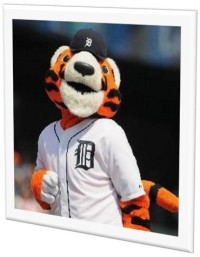
When it comes to sports analogies and radio, I’m as guilty as anyone else. In my everyday dealings with clients, I will often talk about home runs, bench strength, farm teams, and superstars. That’s because in so many ways, the qualities that make for great sports teams and the organizations that own them are very much in-synch with what works in radio.
That seems to be especially true with baseball.
In just a few days, all 30 MLB teams will start their 2016 seasons with high hopes for going all the way to the World Series. Unlike rating books where coming in second or third is an acceptable outcome, in sports, it’s about winning it all.
It’s also about the value of franchises. That’s because they’re not all created equal. Not surprisingly, the Yankees are the most valuable team in baseball. You can attribute that to the New York market, but in baseball – as in radio – value runs much deeper. The entire Forbes rankings are here and you’ll probably see a few surprises.
A case in point is my local favorite, the Detroit Tigers. According to Crain’s Detroit, the Tigers are now worth a cool $1.15 billion. And while that leaves them behind teams like the Yankees, Red Sox, Dodgers, Cardinals, and Giants, it represents nearly a 300% increase in value over the past 10 years.
So how to explain the turnaround, especially considering the Tigers lost more than $20 million just two seasons ago?
While the Tigers have a habit of not talking money and team value, it is clear to people who follow the team – like Crain’s Bill Shea – that four variables factored into their rapid rise , all of which have logical connections to what it takes to succeed in the radio business.
1. The Tigers have invested in talent.
From Miguel Cabrera to Justin Verlander, the Tigers have spent heavily to maintain their superstars, and they’ve secured them with long-term contracts. In the off-season, they added Justin Upton to their arsenal in a series of moves designed to bolster their prospects this year. The value of spending money on personnel doesn’t just translate to wins and losses (or ratings). It has everything to do with fan excitement, buzz, and of course, ticket sales. It’s harder than ever to get your paws on tickets to Tiger games, and a big driver for that is the nine guys on the field.
Fans get attached to players and as importantly, their personalities. Despite the comings and goings of these stars, big players also translate to merchandise sales, a big area of profitability for teams and the league.
It doesn’t always work, of course. Just like on the air, writing a big check doesn’t ensure results. But celebrity – on the field and on the air – matters to fans, the media, and sponsors. Most teams without superstars feel that void, often in both ratings and revenue.
2. The Tigers (and MLB) went all-in to digital.
Notably, it’s a Michigan former state treasurer – Bob Bowman – who masterminded MLB’s deep dive into digital media. According to Crain’s, It all started with an initial investment of $75 million in 2000. Today, that value is estimated in the billions.
Their digital unit – Major League Baseball Advanced Media – also provides video streams for HBO, ESPN, WWE, and other big entities. And they’ve just announced they’ll be handling the NHL’s streaming efforts, too.
As we’ve learned in radio over the years, an initial belief in digital resources can lead to greater fan usage, as well as new profit centers. NPR’s foray into podcasting, for example, is a good example of how early digital investment has paid off. And Hubbard’s Cincinnati’s “2060 Digital” initiative also speaks to the value of staking out this turf, building digital credibility and skills, and then taking it to market.
3. The Tigers are building on an already great brand.
And all boats rise when the core brand has a great strategy and ownership support. Ancillary profit centers add up when teams are healthy. This includes everything from concession stands to parking to merchandising, all of which can drive increased value for a club.
Similarly, strong radio brands leverage their value, command higher ad rates, as well as reap the in the form of merch and station events. There’s something very rewarding in seeing millions of Tigers jerseys all over Comerica Park, Metro Detroit, and around the world. In the way those once ubiquitous “The Loop” shirts were seen everywhere in Chicago back in the ’80s, baseball has done an especially great job with their merch efforts, including creating special commemorative uniforms featured throughout every season.

These days, we’re seeing signs that radio brands are winning with non-traditional revenue, as evidenced by Townsquare’s robust events program, as well as Entercom/Seattle KISW’s “Mens Room Original Red” beer, both of which were highlighted in our Radio’s Most Innovative series.
4. The Tigers have invested in the fan experience.
While many may miss the old Tiger Stadium, the fact is that Comerica Park is a far more fan-friendly environment, from the merry-go-round  to the Ferris wheel to ongoing events like Friday night fireworks to kids running the bases after games. The Tigers have a mascot, Paws, who is omnipresent in videos, on the field, and even at kids’ parties.
to the Ferris wheel to ongoing events like Friday night fireworks to kids running the bases after games. The Tigers have a mascot, Paws, who is omnipresent in videos, on the field, and even at kids’ parties.
An investment in Gen Z (better known as teens) is key to all of baseball thriving not just now, but for generations to come. It starts with understanding that memories are created in the ballpark, a powerful hook that can create a fan for life. But you have to catch them early.
Similarly, we’ve all heard radio fans talk about being at station events that took place years or even decades ago. These experiences can create indelible memories that help solidify a station’s position in the minds and hearts of local fans.
So this spring, good luck to you and your team of choice. And as you sit in the stands this summer wearing your favorite player’s jersey, drinking $8 beers, and parking a few hundred yards away for $20, none of it seems like a burden or an expense. It’s part of the fan experience that only a truly great baseball brand can provide.
You’re part of America’s Pastime, and loving every minute of it.
In many ways, radio is America’s media pastime. Memories are still being made on the AM/FM dial by stations and companies that truly get it.
Play ball! (And Go Tigers!)
- What To Do If Your Radio Station Goes Through A Midlife Crisis - April 25, 2025
- A 2020 Lesson?It Could All Be Gone In A Flash - April 24, 2025
- How AI Can Give Radio Personalities More…PERSONALITY - April 23, 2025




GO TRIBE!!!!!
Yes, some of us get inspired by baseball in ways that are harmful to one’s health.
Wonderful piece Fred! I also believe a lack of creativity, true marketing comprehension and the lack of great story telling contribute to the devaluing of radio. Clients and brands seem put off – they do not get the ROI they once did (or imagined they did). Because people are closing business, selling on-air without truly considering the branding story or narrative they are telling. Just two cents on a side road…
Good input, Peter. Every local business has a story, but it takes concern, empathy, and perceptiveness to effectively communicate it. Appreciate the reminder, and you reading our blog.
Yes BAM has taken MLB into the future and the MLB At Bat App kicks a lot of cash back to the teams, but it comes at the expense of each teams radio network.
There’s always a price to be paid, a topic we’ve been talking about lately regarding NPR and local public radio stations. Thanks, John.